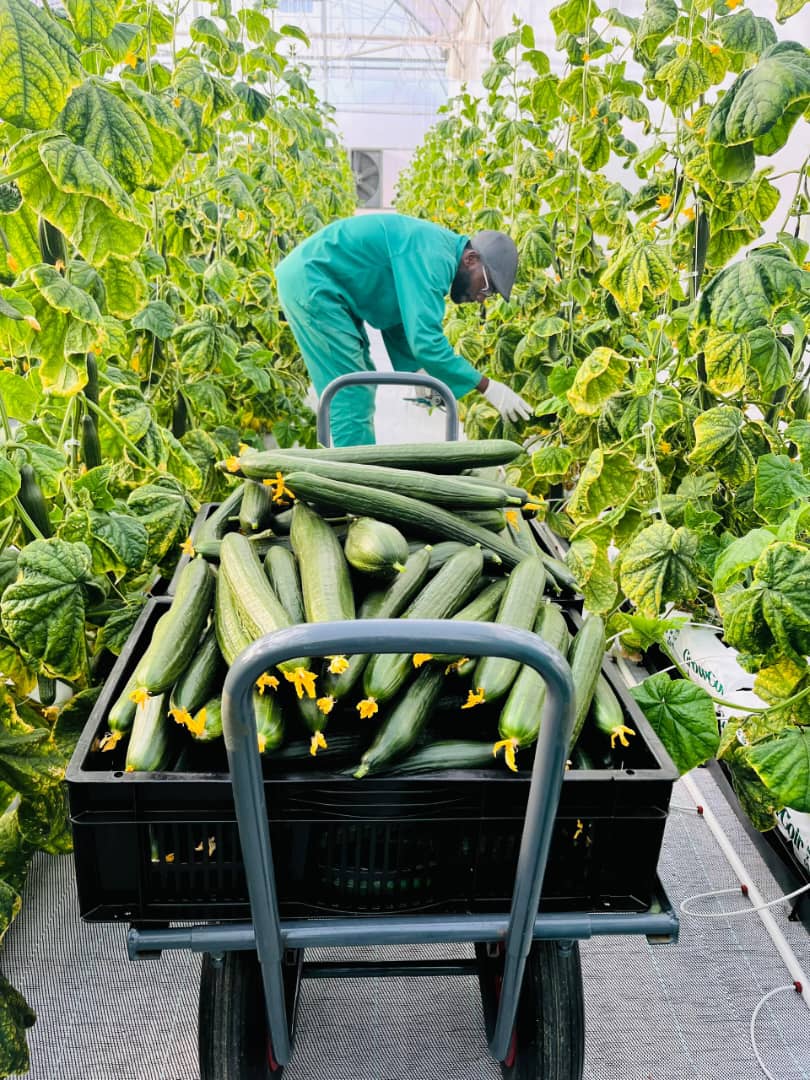While much-anticipated clean energy is yet to be produced at the Daures Green Hydrogen Village, the project has started harvesting its first cucumbers and is on track to produce more vegetables throughout the rest of the year.
In fact, vegetable production is an integral aspect of the ambitious project on the fringes of the desolate Dorob National Park.
The project, which was officially launched by President Nangolo Mbumba in October last year, aims to produce about 18 tonnes of green hydrogen and 100 tonnes of green ammonia when in full production. The highly-complex process of converting borehole water into hydrogen is gradually taking shape on 300 of an available
15 000 hectares in the arid Daures constituency of the Erongo region.
The project, funded through a N$220 million grant from Germany, also strives to produce low-carbon fertilisers by converting green hydrogen into green ammonia and converting this to ammonium sulphate fertiliser.
Lutz Otto, an agricultural specialist at the Daures project a said, the green hydrogen village uses underground water for all its components. The underground water, sourced from three boreholes, has high total dissolved solids (TDS) values, and thus has to be purified through the reverse osmosis (RO) method before being used for irrigation or human consumption. The green hydrogen village has such an RO plant on site, which delivers clean and safe drinking water.
“The greenhouse we have on site is fully climate and irrigation- controlled and automated, meaning we can optimise on water usage. Further, we use hydroponic agriculture (soil-less) where we plant vegetables in a coco-peat substrate, and irrigate with drip irrigation. Underneath the coco-peat growing medium, we have water collection sumps to catch and recycle any excess water. Fertilisers are added to the irrigation water, which is computer controlled. We thus have very low water consumption in our greenhouse compared to other soil-based irrigation methods. I would say we have the most water efficient horticultural production in Namibia,” Otto noted.
He said there are plans to grow other vegetables and fruits as well as become a high-quality seedlings producer for Namibia farmers. “We are currently growing cucumbers, tomatoes and peppers. We will also try growing other crops such as strawberries and lettuce varieties and others,” he said.


